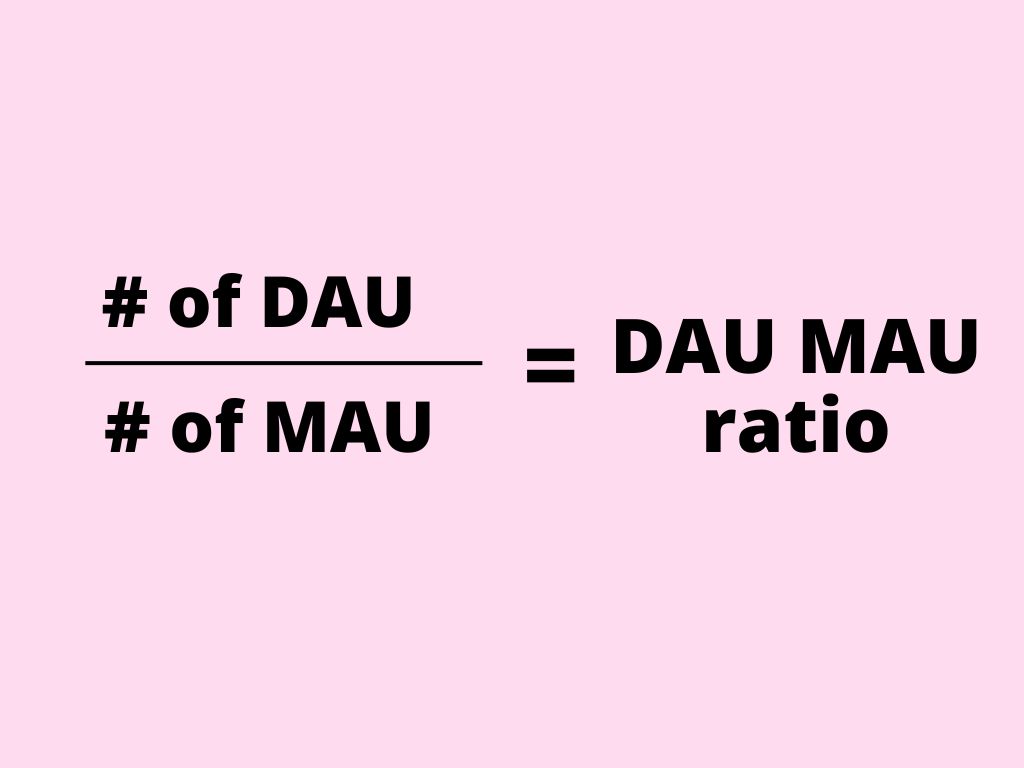
Active user
An active user refers to a unique individual who interacts with an app or website during a specific period of time. This metric is used to measure growth, churn, and the stickiness of a product.
Understanding engagement Engagement can vary depending on the industry and business model. For example, in an online banking app, engagement might be defined as making a transfer, while an eCommerce app may consider adding an item to the cart as a form of engagement. In the case of a SaaS company, software usage could be the focus.
Identifying active users are identified through personal unique identifiers such as email addresses, user IDs, or cookies for web users. In some cases, a combination of these identifiers is used to ensure accurate identification.
Benefits of measuring active users The number of active users is an important indicator of success. Tracking the number of active users over time helps assess the effectiveness of campaigns and the overall customer experience. It also relates to other key metrics like customer lifetime value (LTV) and retention rates.
Types of active user metrics The definition of an active user and the engagement criteria can vary based on the business. Here are three common types of active user metrics:
- Daily Active Users (DAU): The number of unique users who engage with the app within a 24-hour period. This metric is commonly used for apps where users are expected to interact daily, such as gaming apps.
- Weekly Active Users (WAU): The number of unique users who engage with the app within a seven-day period. WAU is typically used for apps that expect weekly interaction, like analytics tools.
- Monthly Active Users (MAU): The number of unique users who engage with the app within a 30-day period. This metric is commonly used for B2B apps where users interact a few times a month or less, such as banking apps.
Measuring active users helps evaluate the health of an app or website and enables alignment of user needs with business objectives. It provides valuable insights for growth and retention strategies, allowing businesses to optimize their products and enhance the user experience.
Calculating active users / how to calculate active users as the metric
Calculating active users can seem deceptively simple, but it can become more complex depending on how the activity is defined. Here are the steps to get started:
- Define the criteria for an active user: Determine the specific actions or behaviors that qualify a user as active. This could be clicking a button, swiping, scrolling, or any other relevant engagement.
- Define the frequency of engagement: Decide the time period you want to measure, such as daily (DAU), weekly (WAU), or monthly (MAU). This determines how often users need to engage to be considered active.
- Collect and analyze data: Use an analytics tool of your choice to track user activity and identify unique users who meet the active user criteria for each period. Sum up the number of unique users for each time frame.
Let’s go through an example together:
- Criteria – app user clicked a button, swiped, or scrolled
- Frequency of engagement – DAU
- On day X, the following engagements were registered:
- User 1 clicked a button and then closed the app
- User 2 logged into the app but then remained idle
- User 3 logged into the app, scrolled, swiped, or clicked a button
- User 1 logged back into the app and clicked another button
Bottom line: Our DAU count adds up to 2. Why?
-
-
- User 1 is an active user (counted once)
- User 2 is not considered active
- User 3 is also an active user
-
Remember that measuring active users depends on your company’s long-term growth goals and business model. For example, the UK’s National Health Service might focus on increasing vaccination awareness, so they would measure active users based on unique logins to their app. On the other hand, Uniqlo’s objective might be to drive sales, so they would measure active users as those who completed a purchase within a given period.
Different business goals require different active user criteria, so tailor your measurements accordingly to align with your objectives.
Unlocking product success: Analyzing the DAU/MAU ratio to measure user engagement and stickiness
The DAU/MAU ratio is a metric that measures the proportion of monthly active users who engage with your app within a 24-hour period. This ratio is useful for forecasting traction, and potential revenue, and evaluating the value your product holds for users based on their return frequency.
To calculate the DAU/MAU ratio:

- Determine the number of Daily Active Users (DAU) for a given time period, such as a month.
- Determine the number of Monthly Active Users (MAU) for the same time period.
- Divide the DAU by the MAU and multiply the result by 100 to get the percentage.
For example, if you had 2,000 DAU and 8,000 MAU in the month of August, your stickiness ratio for that month would be 25%. This indicates a high level of user engagement, as a stickiness ratio above 20% is generally considered good, and 25% or higher is exceptional in most industries.
Key information about active users to remember
- The definition of an active user can vary depending on the industry and specific business goals.
- Tracking the number of active users over time helps assess the effectiveness of campaigns and the overall customer experience.
- Active users can be categorized as Daily Active Users (DAU), Weekly Active Users (WAU), or Monthly Active Users (MAU), with the choice of frequency determined by industry and business needs.
Was this article helpful?
Support us to keep up the good work and to provide you even better content. Your donations will be used to help students get access to quality content for free and pay our contributors’ salaries, who work hard to create this website content! Thank you for all your support!
Reaction to comment: Cancel reply